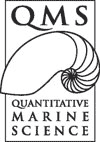
2008 ASLO Ocean Sciences Meeting: From the Water Shed to the Global Ocean
Orlando, Florida, USA, March 2-7 2008
The 2008 Ocean Sciences Meeting was the largest conference I have attended to date, with over 3000 oral and poster presentations squeezed into five days. The presentations were sectioned into over 100 topical sessions, ranging from “Microbial associations with marine invertebrates” to “Fidelity and metrics of ocean models in climates simulations” and “Space-based measurements of ocean climate change”. There were some drawbacks associated with a meeting of this size, such as the time taken to move from one talk to another within a session, and missing out on associated talks which were scheduled simultaneously.
It was difficult to find the time to view all of the posters, though I found the hall layout to be very well structured, allowing me to easily find posters relating to ocean dynamics and circulation. The exhibition area in the same hall a small range United States ocean institutions, such as the Consortium for Ocean Leadership, which I found to be a useful and comprehensive resource for accessing information regarding any of the 95 ocean research and education groups it represents. I was fortunate to meet Janet Fields, who organises Postdoctoral applications at WHOI and gave me some tips and dates to keep in mind, and I also talked to people from NOAA regarding similar future research paths.
My oral presentation, titled “Changes in the subduction of Southern Ocean water masses in ten IPCC models”, was focused on how anomalies in surface fluxes and the mixed layer affected the subduction of Subantarctic Mode Water and Antarctic Intermediate Water masses by the end of the 21st Century. We found that decreases in the buoyancy loss due to surface warming and freshening and an increased wind stress, combined with a shoaled mixed layer, led to an overall reduction in the subduction of these two primary upper limb water masses, which could ultimately result in a decrease in the Southern Ocean’s ability to uptake carbon. My talk wasn’t programmed until the Thursday morning, and even though the session started at 8am, there were at least 50 people in the audience. I had a couple of questions, one of which (from Prof. Lynne Talley) provided a useful suggestion to calculate subduction using an alternate method. Few questions followed most of the talks as the audience were from a variety of fields and seemed overwhelmed by new information in the presentations!
Between oral sessions there were plenary talks, my favourite of which was titled “The Future of Ocean Sciences”, given by Dr. Richard Spinrad from NOAA. He covered all sorts of new ocean-based technologies, Argo floats, and satellite data- acquiring methods, as well as communication challenges of environmental scientists. He noted that, “We need to find the Stommels in our community” and to explore their visions. There were also Committee’s Choice section with talks appealing to all disciplines, such as “Ocean Scientist = Rock Star”, where Rachel Bergren stressed the importance of educating and promoting our scientific results to the eager public.
On the long return flight back to Australia, Dr. Robin Robertson (an oceanographer from UNSW) just happened to sit next to me, which gave me a relaxed chance to discuss the events of the past week. Overall this was a wonderful experience and a great chance to explore my future career in physical oceanography. Thank you to the UTAS-CSIRO Joint PhD Program in Quantitative Marine Science, ACE CRC and IASOS for their financial support.
A detailed program and conference information can be found at the ASLO website.